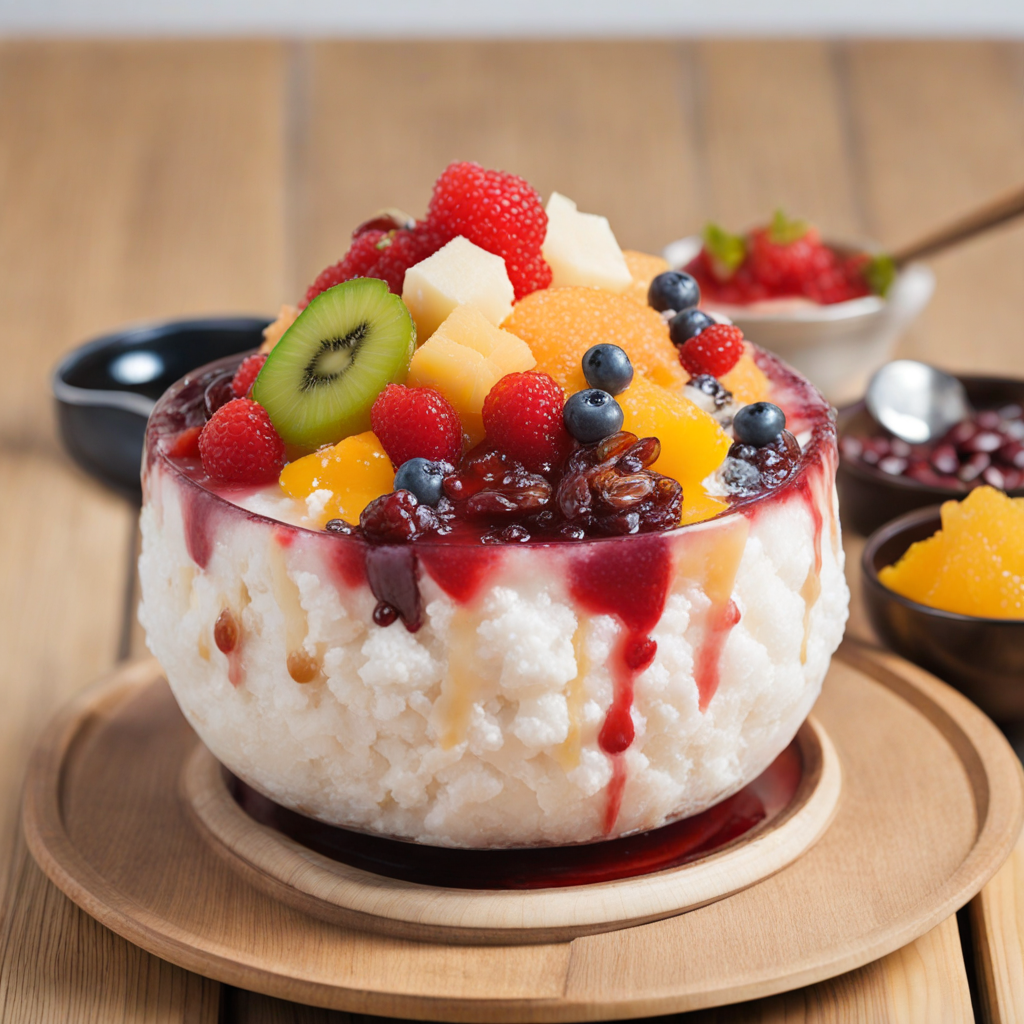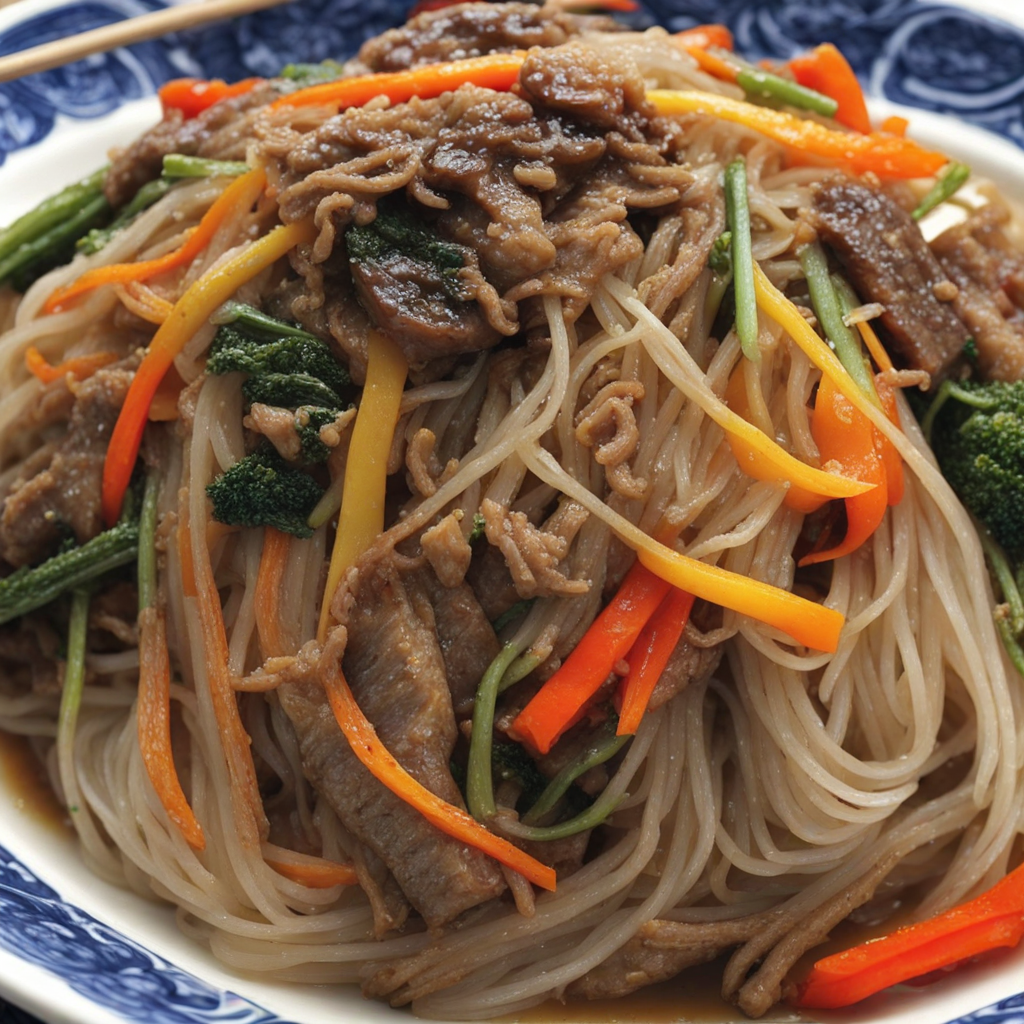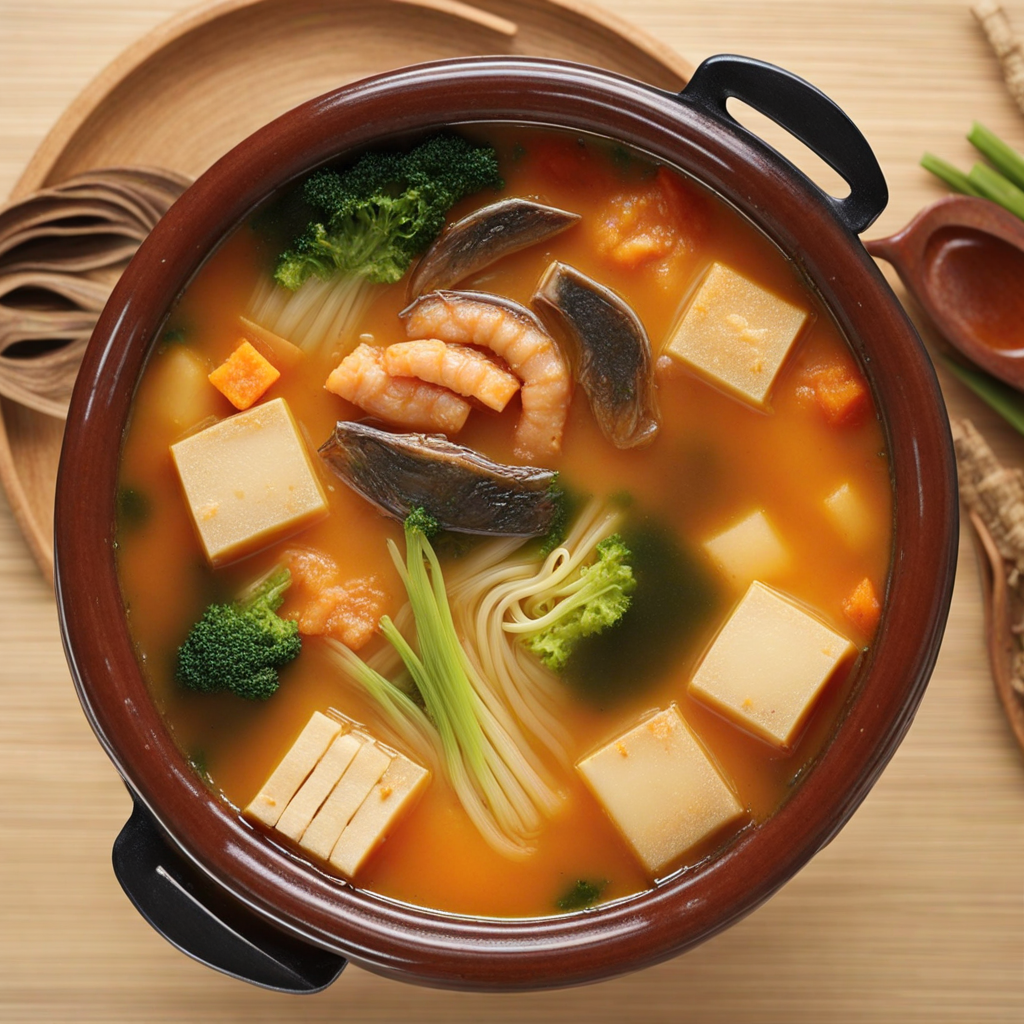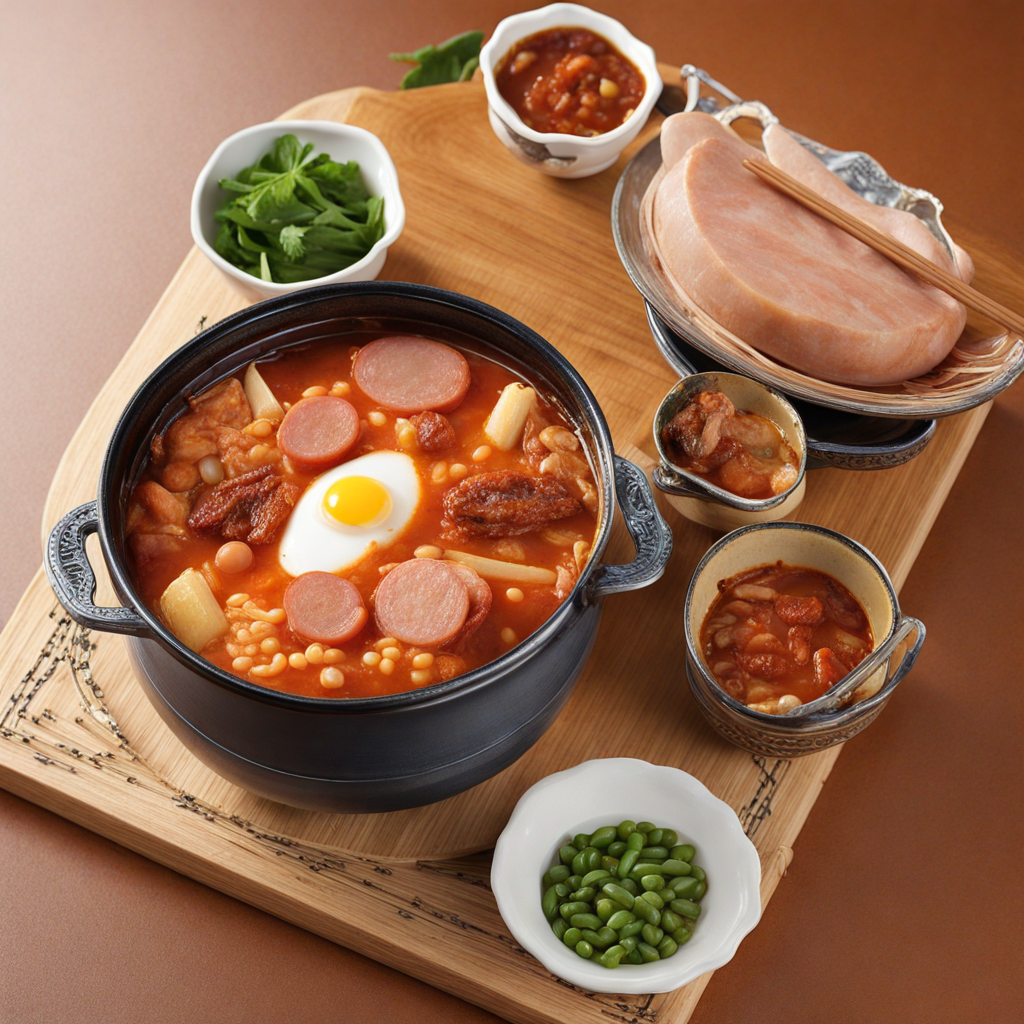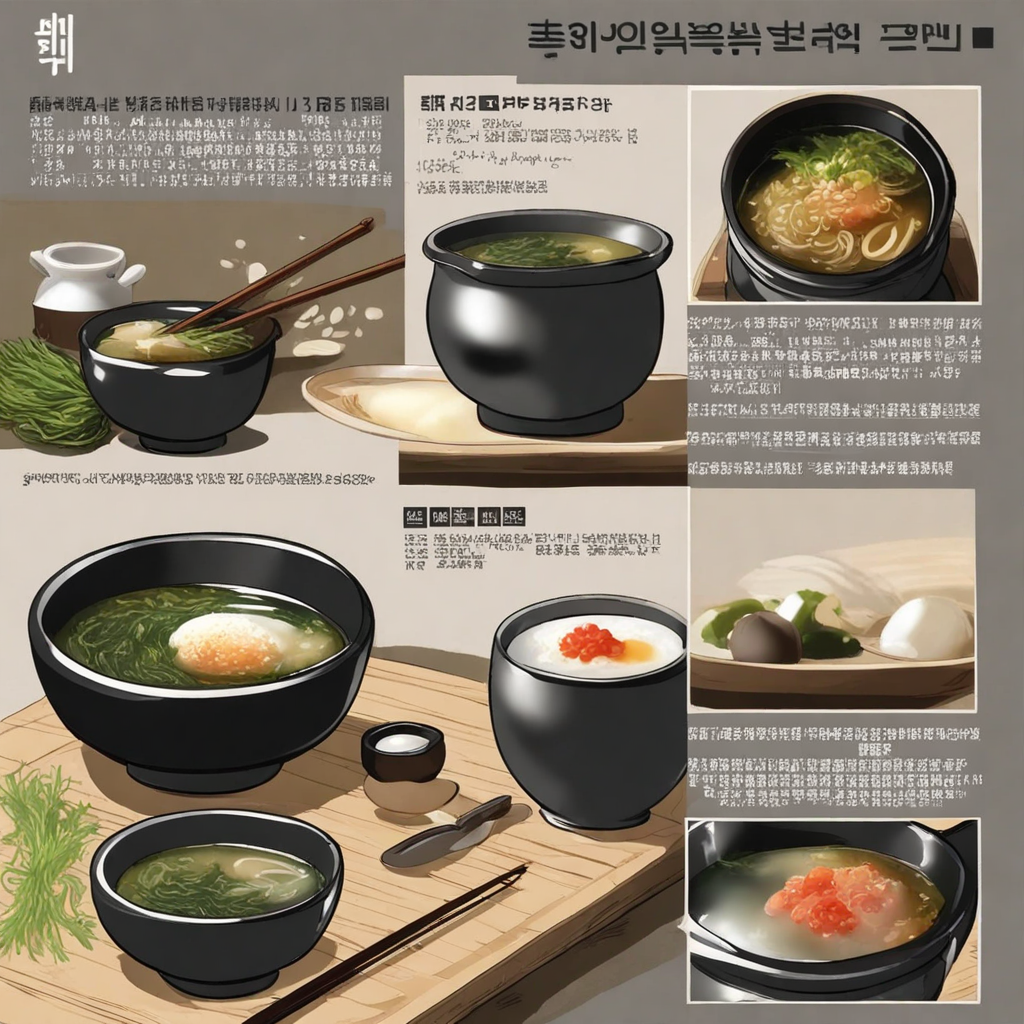Patbingsu
Patbingsu is a delightful Korean dessert that combines shaved ice with a variety of toppings, creating a refreshing and satisfying treat perfect for warm weather. The base of patbingsu is finely shaved ice, which has a light, fluffy texture that melts in your mouth. Traditionally, it is topped with sweetened red bean paste (pat), which adds a rich, earthy sweetness that complements the cold ice. This combination of textures—the soft, icy base and the smooth, creamy bean paste—creates a unique and delightful contrast for the palate. As you explore patbingsu, you’ll find that the toppings can vary widely, offering endless possibilities for flavor and texture. Common additions include fresh fruits like strawberries, mangoes, or peaches, which lend a juicy sweetness and vibrant color to the dish. Other popular toppings may include mochi, condensed milk, powdered milk, or even ice cream, adding creaminess and richness that elevates the overall experience. Each bowl is often garnished with colorful toppings, making it not only delicious but also visually appealing. The beauty of patbingsu lies in its adaptability, allowing for creative variations to suit different tastes. Some modern interpretations include flavors like green tea, chocolate, or even fruity syrups, transforming this classic dish into a canvas for culinary creativity. Whether you prefer the traditional version or one with a contemporary twist, patbingsu offers a refreshing escape into the world of Korean desserts, making it a must-try for anyone looking to experience new and exciting flavors.
How It Became This Dish
Origin of Patbingsu Patbingsu (팥빙수) is a traditional Korean dessert that has become synonymous with summer enjoyment in South Korea. The dish consists primarily of finely shaved ice topped with sweetened red beans (팥, pat), along with various other ingredients such as fruits, condensed milk, and syrup. Its origins can be traced back to the late 19th century during the Joseon Dynasty, when a similar dish known as "bingsu" (빙수) was prepared. This early version was made using ice blocks that were shaved and served with sweet toppings, primarily during the hot summer months. The word "bingsu" itself can be broken down into "bing" (빙), meaning ice, and "su" (수), meaning water. The combination of these elements reflects the refreshing quality of the dish, which served as a means of cooling off in a humid climate. While the original bingsu was simpler and less varied than today's patbingsu, it laid the groundwork for a dessert that would evolve over the decades. \n\n Cultural Significance Patbingsu holds a special place in the hearts of many Koreans, symbolizing summer, nostalgia, and communal experiences. It is not just a dessert; it is often associated with childhood memories, family gatherings, and social outings. The act of sharing a large bowl of patbingsu among friends or family fosters a sense of togetherness and community. As South Korea underwent rapid industrialization and urbanization in the 20th century, the cultural landscape changed significantly, and so did the consumption of patbingsu. The dessert began to appear more frequently in cafes and restaurants, making it accessible to a broader audience. Its popularity surged during the 1960s and 1970s, coinciding with the rise of urban culture and the influx of Western influences. \n\n Evolution Over Time Over the decades, patbingsu has undergone significant changes, evolving from a simple dessert to a complex and varied culinary experience. The introduction of new ingredients and toppings has transformed patbingsu into a canvas for creativity. While traditional patbingsu still features sweetened red beans as its primary topping, modern variations now include an array of fruits such as strawberries, mangoes, and kiwis, as well as items like mochi, ice cream, and even cereal. The late 20th century saw a shift in the way patbingsu was perceived, as it began to gain attention beyond the confines of Korean culture. With the globalization of Korean cuisine, patbingsu made its way onto international menus, often adapted to suit local tastes. This adaptation has led to variations that may include flavors like matcha or chocolate, showcasing the flexibility of this beloved dessert. \n\n Regional Variations While patbingsu is enjoyed nationwide, different regions in South Korea have their own unique takes on this classic dish. For instance, in Jeju Island, you might find patbingsu topped with local tangerines, while in the city of Incheon, the dessert is often served with a generous helping of sweetened chestnuts. Furthermore, the city of Seoul has become a hub for innovative patbingsu creations, with numerous cafes and dessert shops experimenting with flavors and presentations. Some establishments offer visually stunning "bingsu towers" that rise several inches high, topped with vibrant fruits and whipped cream. This has led to a trend where diners not only enjoy the taste but also the aesthetic appeal of their dessert, often sharing photos on social media platforms. \n\n Modern Trends and Innovations In recent years, the popularity of patbingsu has been fueled by social media, where visually appealing food has become a driving force in consumer trends. Cafes and restaurants have capitalized on this by creating Instagram-worthy versions of patbingsu, complete with elaborate toppings and artistic presentations. Moreover, health-conscious trends have influenced the ingredients used in patbingsu. Many establishments now offer options with natural sweeteners, dairy alternatives, and organic ingredients, catering to the rising demand for healthier dessert options. The introduction of "vegan patbingsu" has also emerged, appealing to those who are looking for plant-based alternatives while still enjoying the refreshing taste of this popular dessert. \n\n Patbingsu in Popular Culture Patbingsu has transcended its role as merely a dessert to become a significant cultural icon in South Korea. It has been featured in numerous television dramas and films, often symbolizing summer romance or nostalgia for childhood. Such portrayals have further cemented its status as a beloved treat among younger generations, who associate it with carefree moments and leisure time. Additionally, culinary festivals and events in South Korea often feature patbingsu, showcasing various interpretations from local chefs and home cooks alike. These events not only celebrate the dish but also serve to preserve the rich cultural heritage associated with it. As a result, patbingsu is not just a dessert but a living testament to the evolving culinary traditions of Korea. \n\n Conclusion Patbingsu exemplifies the rich tapestry of Korean food culture, reflecting both historical roots and modern innovations. From its humble beginnings to its current status as a trendy and diverse dessert, patbingsu continues to be a source of joy and comfort for many. Whether enjoyed on a hot summer day or during festive gatherings, this delightful treat symbolizes the warmth of community and the artistry of Korean cuisine. Its evolution is a testament to the dynamic nature of food culture, blending tradition with contemporary tastes to create a dish that resonates with people of all ages.
You may like
Discover local flavors from South Korea


